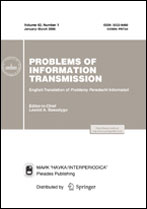|
Communication Network Theory
The geometry of big queues
A. A. Puhalskii
Kharkevich Institute for Information Transmission Problems, Russian Academy of Sciences, Moscow, Russia
Abstract:
We use Hamilton equations to identify most likely scenarios of long queues being formed in ergodic Jackson networks. Since the associated Hamiltonians are discontinuous and piecewise Lipschitz, one has to invoke methods of nonsmooth analysis. Time reversal of the Hamilton equations yields fluid equations for the dual network. Accordingly, the optimal trajectories are time reversals of the fluid trajectories of the dual network. Those trajectories are shown to belong to domains that satisfy a certain condition of being “essential”. As an illustration, we consider a two-station Jackson network. In addition, we prove certain properties of substochastic matrices, which may be of interest in their own right.
Keywords:
queueing theory, Jackson networks, large deviations, large deviation principle, optimal trajectories, Hamilton equations, dual Markov processes, fluid dynamics.
Received: 29.08.2018
Revised: 14.01.2019
Accepted: 15.01.2019
Citation:
A. A. Puhalskii, “The geometry of big queues”, Probl. Peredachi Inf., 55:2 (2019), 82–111; Problems Inform. Transmission, 55:2 (2019), 174–200
Linking options:
https://www.mathnet.ru/eng/ppi2291 https://www.mathnet.ru/eng/ppi/v55/i2/p82
|


| Statistics & downloads: |
| Abstract page: | 290 | | Full-text PDF : | 50 | | References: | 44 | | First page: | 7 |
|





 Contact us:
Contact us: Terms of Use
Terms of Use
 Registration to the website
Registration to the website Logotypes
Logotypes







 Citation in format
Citation in format 